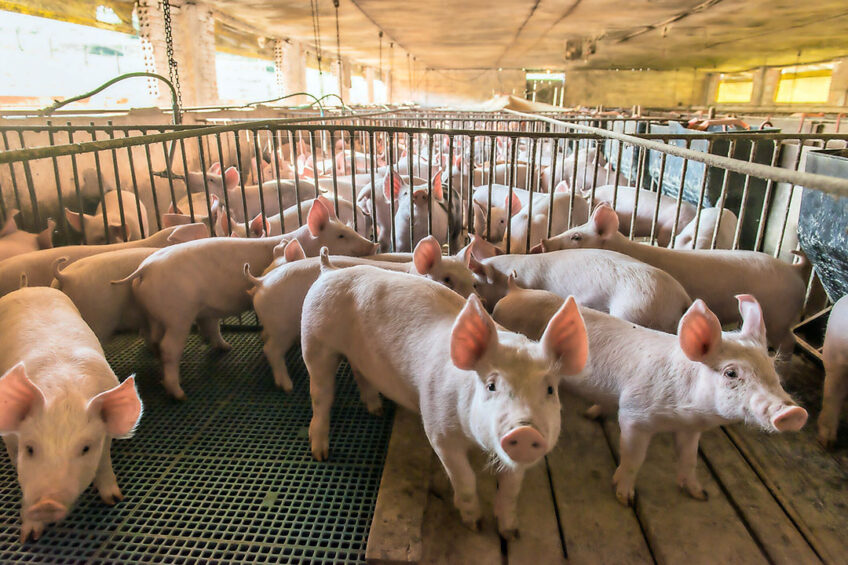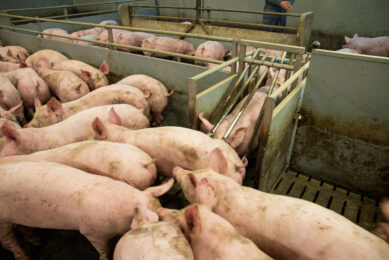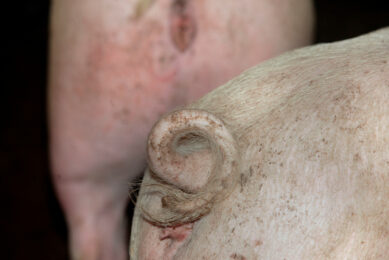Sulphur and sulphate in diets: is it a concern?

Sulphur-containing compounds are essential elements for pigs. However, there is a rising concern about the excess of sulphur sources in the diet, as sulphates could serve as a substrate for increased hydrogen sulphide production by sulphate-reducing bacteria, with effects on gut health as well as effluent composition.
Based on the French feed database, the total sulphur content of raw feedstuffs can range from less than 0.5g/kg to over 10g/kg. Those different sulphur values depend on the composition of the material itself but also on its origin and/or processing. The sulphur content of whole grains (wheat, corn) is relatively low, usually close to 1.3g/kg. However, sulphur content in feedstuffs based on cereals like corn gluten meal can be more than 10g/kg.
Dietary sulphur content is directly linked to sulphur amino acids, sulphate-containing ingredients (e.g. trace minerals) and by-products from the milling industry pre-treated with sulphuric acid to enhance starch extraction. Large variation in the total sulphur content of dietary ingredients might affect total sulphur feed intake, sulphur excretion by animals (55% of intake in the urine) and gaseous sulphur emissions from pig slurry during anaerobic storage.
Sulphur and gut health
Unlike the extensive understanding of sulphur amino acids metabolism, inorganic sulphur requirements have received little attention. As several feedstuffs and minerals have elevated levels of total sulphur, intake can exceed the tolerable limits for pigs and affect gut health. In addition, as absorption of total dietary sulphur is about 65% in pigs, sulphur excretion can have an impact on the soil, water and air.
Sulphate-reducing bacteria are able to reduce sulphate to H2S (see Figure 1). Those bacteria are present in the gastrointestinal tract (GIT) of animals and can significantly influence the gut environment, due to the production of H2S and the competition for nutrients. H2S interferes in the colonocytes with metabolic processes, and it damages the intestinal mucosa. It is considered the third gasotransmitter, after nitric oxide and carbon monoxide, and is involved in inflammation, gut motility, oxidative stress, ulcer healing, vascular tone and cellular apoptosis.

2 experiments conducted at Iowa State University with 13kg pigs fed inorganic sulphur showed a linear reduction in daily gain, and the higher dietary sulphur level did alter inflammatory mediators and intestinal bacteria. A third experiment conducted in Quincy, IL, United States involved 9kg pigs, also fed inorganic sulphur, which also showed a linear reduction in daily gain. In both studies the reduction in growth rate was primarily due to an effect of diet on feed intake (see Figure 2).
In gilts, graded amounts of sulphur resulted in an increase in manure acidity, nitrogen and sulphur content and odour-related compounds like H2S. Toxic effects of inorganic sulphur salts in monogastric species are usually related to abnormalities in water balance in the GIT, generally manifested as diarrhoea resulting from the osmotic attraction of water into the gut lumen.

Effluent sulphur fate and toxicity
Most of the sulphur intake is recovered as sulphate in urine. Mixing of urine and faeces under anaerobic conditions conduces to a consumption of sulphates in few days with a large production of sulphide. This depletion of sulphate and accumulation of sulphides – coupled with an increase of apparent volatile fatty acid consumption, particularly propionate and butyrate required by sulphate-reducing bacteria to produce sulphide – suggests a dissimilatory sulphate reduction pathway involved by sulphate-reducer micro-organisms.
The presence of such gas in the barns affects the respiratory tract and animal welfare, as H2S is extremely toxic. After inhalation, H2S is dissolved in blood and distributed throughout the body (because of its high fat-solubility), interacting with some enzymes. The sulphur can inhibit the cytochrome C oxidase activity impacting the mitochondrial respiratory chain and, therefore, oxygen utilisation by the colonocytes. It is also known that H2S limits butyrate oxidation (responsible for about 70% of the energy for the colonocytes). This energy deficiency is often associated with the prevalence of ulcerative colitis and impaired gut permeability.
The deadly atmospheric H2S content in the livestock building is close to 500 ppm but legislation limits worker exposure to less than 10 ppm. That limitation is important to keep workers safe, as the literature shows that 33% of accidents are linked to H2S intoxication provoking worker deaths. In most cases, the maximum exposure to H2S occurs when the effluent is mixed before land spreading and is well known as “H2S burst-release”, which is a sudden increase (100% or greater) of H2S release rate measured during any period compared to previous ones.
Managing the sulphur produced in pig farms
In pig slurry, H2S is produced in anaerobic conditions (as previously mentioned, the sulphate in urine and faeces is reduced into sulphite and then into sulphide by sulphate-reducing bacteria) or as a result of the mineralisation of organic dietary compounds containing sulphur. The feed is ultimately a major source of sulphur in manure, which means that H2S production and emission could be reduced by selecting feedstuffs low in sulphur.
The H2S produced may contribute to odour emissions and present a risk of intoxication for both farmers and pigs. Besides, H2S is also a highly corrosive gas. That implies that, when manure is stored to be used for biogas purposes, the H2S must be removed to reduce engine-generator set maintenance costs. Associated costs (including both capital and operational expenses) can vary between € 3.70 and € 9.60 per normal cubic metre of H2S removed. Dry-based chemical methods have been used for sulphur removal from gas streams with less than 200kg sulphur per day. Estimated treatment expenses may reach up to US$ 23,840 per year.
Choice of ingredients
The choice of low sulphur feed ingredients can influence the damage caused to intestinal mucosa while reducing the risks of human and pig toxicity in barns. As low sulphur diets generate lower sulphur excretion, a maximum total dietary sulphur content should be considered to reduce sulphide production during pig manure storage. The right selection of any single ingredients (including sulphate-free minerals) involved in the feed formulation is a key strategy in sulphur management.
Authors: Alessandra Monteiro and Arturo Piñon, Animine, France; and Pascal Peu, INRAE Opaale, France










